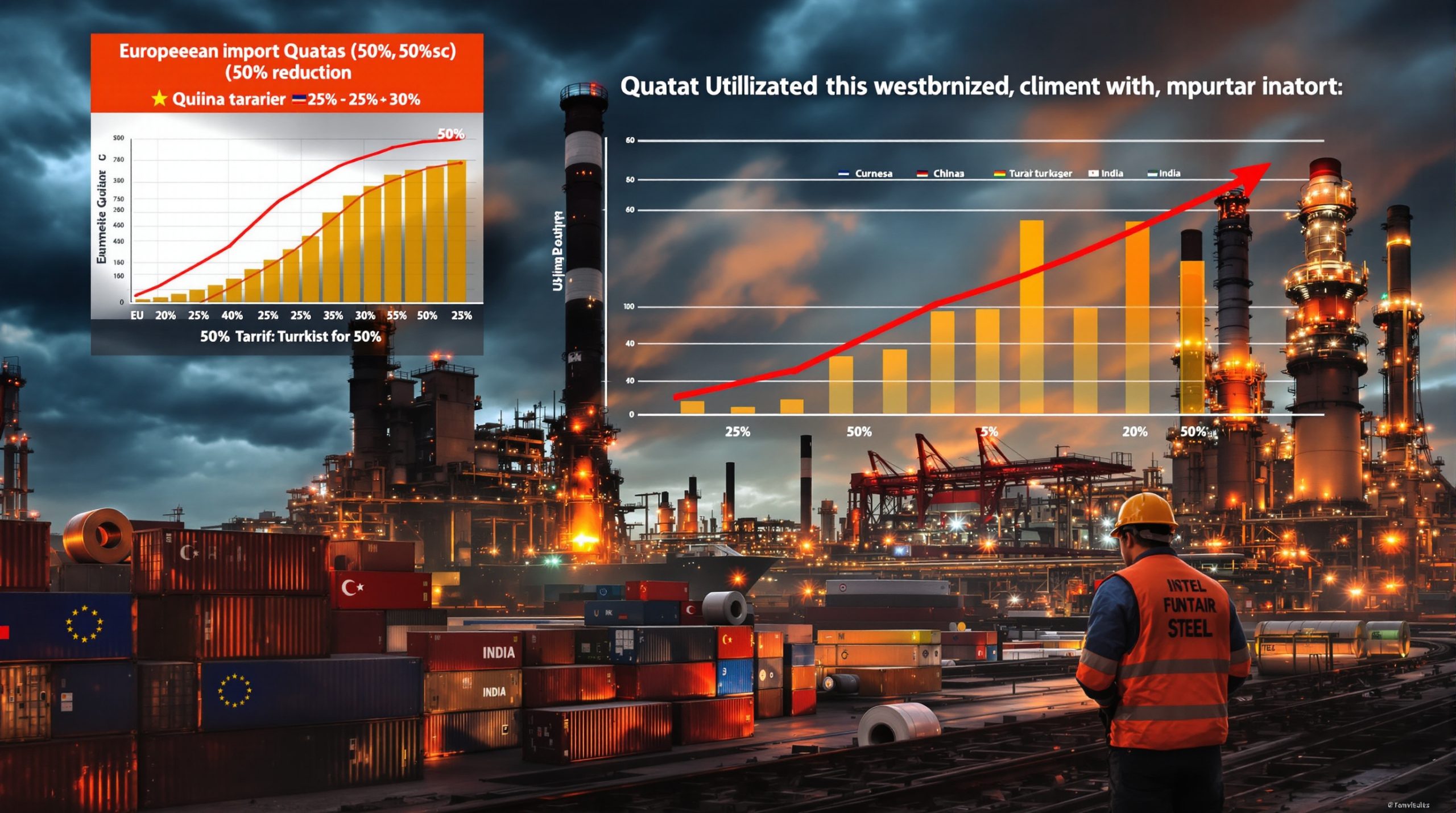Understanding Pan Pacific Copper's Production Reduction
Japan's Pan Pacific copper output cut represents a significant shift in the country's copper industry as Pan Pacific Copper (PPC) recently announced plans to reduce its refined copper production. This strategic move comes amid evolving market conditions and reflects broader trends affecting global copper supply chains. The announcement has sparked discussions about potential impacts on copper price predictions and what it signals about Japanese metals production strategy.
What Is Pan Pacific Copper's New Production Target?
Pan Pacific Copper has set a refined copper production target of 287,400 metric tons for the second half of the 2025/26 financial year, spanning from October 2025 through March 2026. This figure represents a 2.5% reduction compared to production volumes during the same period in the previous year.
The production adjustment appears modest at first glance, but industry analysts suggest it may have deeper strategic significance within the context of tightening global copper supply forecast and changing market dynamics.
PPC operates through a distinctive business model that differentiates it from many competitors in the copper industry. Rather than maintaining its own smelting and refining operations, the company outsources these processes to facilities owned by its parent companies. This arrangement allows PPC to focus on raw material procurement and refined metal sales while leveraging the established production infrastructure of its corporate parents.
Who Controls Pan Pacific Copper?
The ownership structure of Pan Pacific Copper reflects a strategic alliance among major Japanese industrial players:
- JX Advanced Metals holds the largest stake at 47.8%
- Mitsui Mining and Smelting controls 32.2%
- Marubeni Corporation maintains a 20% ownership position
This tripartite ownership structure represents a collaborative approach to copper production and distribution within the Japanese metals industry. By pooling resources and expertise, these companies create economies of scale while maintaining flexibility in their market approach.
The corporate governance arrangement allows PPC to function as a specialized entity handling raw material procurement and refined metal sales. Meanwhile, the actual production processes take place at facilities operated by the parent companies, creating an integrated supply chain with distinct operational responsibilities.
Global Copper Market Context and Implications
How Does This Cut Reflect Broader Industry Trends?
The decision by Pan Pacific Copper to reduce production comes at a pivotal moment for global copper markets. Industry observers note that several major producers worldwide have been adjusting output targets in response to various constraints affecting the copper supply chain.
Resource challenges, including declining ore grades at major mines and difficulties in developing new high-quality deposits, have created headwinds for producers seeking to maintain or expand output levels. The geological realities of copper mining increasingly require more sophisticated and costly extraction techniques to maintain production volumes.
Copper concentrates—the semi-processed material that feeds refineries—have become a focal point of concern across the industry. Tightening concentrate markets may be influencing production decisions, as smelters compete for available material to maintain optimal operating rates.
The production adjustment by PPC potentially signals a recalibration of Japanese metals strategy in response to these evolving conditions. According to a recent report from Reuters, Japanese producers have historically prioritized operational stability and long-term supply relationships, sometimes at the expense of maximizing short-term profit opportunities.
What Supply Chain Factors Are Driving Production Decisions?
Multiple supply chain factors appear to be influencing production strategies across the copper industry:
-
Concentrate availability challenges: Global mine production constraints have created competitive pressure for copper concentrate supplies, potentially affecting PPC's access to raw materials.
-
Processing capacity considerations: Parent company facilities may face technical constraints or maintenance requirements that influence optimal production levels.
-
Strategic production scheduling: Companies increasingly calibrate production against market conditions and price forecasts rather than pursuing maximum output regardless of market signals.
-
Operational efficiency optimization: The 2.5% adjustment may reflect fine-tuning to achieve optimal efficiency at specific processing facilities.
Technical analysts point out that copper smelters and refineries typically operate most efficiently within specific capacity ranges. Running at suboptimal levels can increase per-unit production costs and create quality control challenges. The modest production adjustment announced by PPC may represent a technical optimization rather than a significant strategic pivot.
Economic Impact Analysis
How Might This Reduction Affect Copper Pricing?
While a 2.5% production adjustment from a single producer might seem unlikely to move global markets significantly, the context matters considerably. The copper market has shown increasing sensitivity to supply adjustments due to several factors:
- Growing demand from renewable energy applications
- Electric vehicle manufacturing expansion
- Persistent challenges in developing major new mining projects
- Rising production costs across the industry
Price impacts will likely depend on demand trends across key copper-consuming sectors:
| Sector | Current Demand Trend | Sensitivity to Supply Changes |
|---|---|---|
| Construction | Moderate growth | Medium |
| Electronics | Strong growth | High |
| Renewable Energy | Rapid expansion | Very high |
| Automotive | Recovery phase | Medium-high |
The renewable energy sector deserves particular attention when assessing potential price impacts. Copper intensity in solar installations, wind power generation, and grid infrastructure upgrades continues to increase. Industry research suggests that copper demand from renewable energy applications could grow at 12-15% annually through the current decade, potentially outpacing supply growth.
Market analysts note that copper price movements often anticipate supply changes rather than merely reacting to them. The psychological impact of production cuts on trader sentiment can sometimes exceed the mathematical supply reduction, particularly in markets already concerned about tightening supplies.
What Are The Implications For Japanese Manufacturing?
Japan's manufacturing sector maintains significant copper consumption across electronics, automotive components, machinery, and infrastructure applications. The production adjustment by PPC raises several considerations for domestic manufacturers:
-
Input cost considerations: Any upward pressure on copper prices could increase manufacturing costs for Japanese producers already facing various economic headwinds.
-
Supply security concerns: Manufacturers with copper-intensive processes may reevaluate their procurement strategies to ensure reliable access to materials.
-
Competitive positioning: Cost increases that cannot be passed through to end customers could affect competitive positioning against international rivals.
-
Innovation incentives: Higher material costs typically accelerate efforts to improve material efficiency or develop alternative solutions.
Japan's industrial policy has historically emphasized maintaining domestic supply chains for critical materials. The production adjustment by PPC may prompt discussions about the balance between market optimization and strategic industrial considerations among Japanese policymakers and business leaders.
Regional Production Landscape
How Does This Compare To Other Asian Copper Producers?
The production strategy announced by Pan Pacific Copper stands in contrast to approaches taken by some other major Asian copper producers, particularly in China. While PPC has opted for a modest reduction, several Chinese producers have announced capacity expansion plans despite various market challenges.
This divergence highlights different strategic priorities and operating environments:
-
Japanese producers typically emphasize operational stability, quality control, and long-term customer relationships.
-
Chinese producers often prioritize market share growth, vertical integration, and economies of scale.
-
Production cost structures vary significantly, with Japanese facilities generally facing higher labor and energy costs than some regional competitors.
These different approaches create a complex competitive landscape across Asian copper markets. The production adjustment by PPC may reflect a Japanese emphasis on optimizing operations for current market conditions rather than pursuing market share through aggressive expansion.
Industry specialists note that production quality and consistency remain significant differentiators in copper markets, with Japanese producers traditionally commanding premium positions based on product reliability and technical specifications.
What Is The Outlook For Japanese Metals Production?
The modest production adjustment by PPC suggests a cautious, measured approach to market conditions rather than a dramatic strategic shift. Several factors will likely influence the outlook for Japanese metals production:
-
Resource security considerations: Japan's limited domestic mineral resources create natural incentives to develop diverse international supply relationships.
-
Technological advantages: Japanese producers continue to invest in process improvements and specialized product development to maintain competitive advantages.
-
Market positioning: Strategic focus on high-specification products for technical applications rather than competing primarily on volume and price.
-
Energy transition opportunities: Growing demand for specialized copper products in renewable energy and electric vehicle applications could create opportunities for technically advanced producers.
Japanese metals producers face the ongoing challenge of balancing production costs against market opportunities while maintaining their traditional emphasis on product quality and reliability. The production adjustment by PPC suggests a strategic recalibration rather than a fundamental change in approach.
Investment Considerations
What Should Investors Watch For Following This Announcement?
The production adjustment by Pan Pacific Copper offers several potential signals for investors tracking copper markets and related equities:
-
Parent company performance indicators: Production changes may affect financial performance for PPC's parent companies, particularly if they signal broader strategic shifts.
-
Copper price sensitivity: Investors should assess how copper prices respond to production adjustments, particularly if multiple producers announce similar moves.
-
Upstream impacts: Changes in refined copper production can affect demand and pricing for copper concentrates, potentially impacting mining companies.
-
Derivative market responses: Copper futures, options, and related financial instruments may show volatility as markets digest production changes and reassess supply-demand balances.
Market technicians suggest watching key price levels and trading volumes as indicators of how significantly the production adjustment affects market sentiment. Particular attention should be paid to futures curve structures, which can signal evolving market expectations about future supply-demand balances.
Correlation analysis between copper prices and equity valuations across the metals sector can provide insights into how production adjustments might affect investment performance. Historically, production cuts have sometimes triggered positive equity price movements by supporting commodity prices and signaling producer discipline.
How Might This Affect Related Mining Equities?
The production adjustment may have differentiated impacts across the copper mining sector:
-
Producers with expansion capacity could benefit if reduced Japanese output contributes to tighter markets and price support.
-
Companies with Japanese offtake agreements may need to evaluate their marketing strategies if buyer requirements change.
-
Miners facing their own production challenges may find market conditions more supportive if multiple refiners reduce output targets.
Investment thesis adjustments across the copper sector typically consider multiple factors beyond single producer announcements. However, the PPC adjustment may contribute to growing narrative about supply constraints in copper markets, potentially supporting valuation multiples for producers with quality assets and expansion potential.
Investors should consider that copper markets increasingly reflect both industrial demand fundamentals and financial investment flows. Strategic and technical production decisions interact with investment sentiment, creating complex market dynamics that extend beyond simple supply-demand calculations.
Future Production Scenarios
What Could Reverse The Production Reduction Trend?
Several potential developments could influence future production decisions by Pan Pacific Copper and similar producers:
-
Improved concentrate availability from existing or new mining operations could alleviate raw material constraints.
-
Strategic reassessments by parent companies might prioritize market share or volume growth over short-term optimization.
-
Price movements beyond certain thresholds could incentivize production increases despite various operational challenges.
-
Technological advancements in processing efficiency or material recovery could improve economics for higher production levels.
-
Demand surges from key consumption sectors might create strategic imperatives to maximize output despite various constraints.
Technical innovations deserve particular attention when considering future scenarios. The copper industry has historically demonstrated the capacity to overcome resource challenges through technological advancement, from improved flotation processes to more efficient electrowinning techniques.
Market observers note that production decisions typically reflect a complex balance of technical constraints, financial considerations, and strategic positioning. The relatively modest adjustment announced by PPC suggests flexibility to revise production targets if market conditions warrant.
When Might Production Levels Be Reassessed?
Several potential trigger points could prompt reconsideration of production targets:
-
Regular planning cycles: Major producers typically conduct formal production planning on quarterly or semi-annual schedules.
-
Significant market movements: Price volatility beyond certain thresholds often triggers strategic reviews.
-
Technical developments: Facility performance improvements or maintenance completions can create opportunities to revise production targets.
-
Supply chain developments: Changes in concentrate availability or quality can necessitate production adjustments.
-
Competitive responses: Strategic moves by major market participants sometimes trigger reassessments across the industry.
Industry specialists note that the copper production chain involves significant technical complexity and substantial lead times. While short-term adjustments within existing facility constraints can be implemented relatively quickly, major production pivots typically require months of planning and preparation.
FAQ: Japan's Copper Production Cut
Why Is Pan Pacific Copper Reducing Production?
Pan Pacific Copper's decision to implement a 2.5% production reduction likely reflects multiple considerations. Technical optimizations at parent company facilities may play a significant role, with production levels calibrated to achieve optimal efficiency and quality control. Market conditions, including concentrate availability and refined copper demand forecasts, have likely influenced the decision.
The reduction may also represent strategic positioning within an evolving competitive landscape. By fine-tuning production to match market conditions, PPC can potentially optimize financial performance while maintaining flexibility to adjust as conditions change.
Will This Cut Significantly Impact Global Copper Supply?
The global impact of PPC's production adjustment will depend on broader industry dynamics. A 2.5% reduction from a major Japanese producer represents a modest adjustment in global terms, but market impacts depend on:
- Whether other major producers announce similar adjustments
- Demand growth rates across key consumption sectors
- Inventory positions throughout the supply chain
- Market sentiment and investment flows in copper markets
Copper markets have historically demonstrated sensitivity to production changes that might appear modest in percentage terms. The psychological impact on trader sentiment sometimes exceeds the mathematical supply impact, particularly in markets already concerned about potential supply constraints.
How Does This Decision Reflect On Japan's Metals Industry?
The production adjustment appears consistent with Japan's traditional approach to metals production, emphasizing operational stability, product quality, and long-term market positioning. Rather than pursuing aggressive volume growth, Japanese producers typically focus on optimizing operations within existing capacity while maintaining rigorous quality standards.
This measured approach contrasts with strategies employed by some international competitors who prioritize market share growth and volume expansion. The production adjustment by PPC suggests continued emphasis on operational optimization rather than a fundamental strategic pivot by Japan's metals industry.
What Are The Environmental Implications Of This Production Decision?
A modest production reduction could potentially yield incremental environmental benefits at the processing facilities involved. Copper refining requires significant energy inputs and generates various waste streams. Optimized production levels sometimes improve environmental performance metrics on a per-unit basis.
However, the environmental impact extends beyond facility-specific considerations. If production shifts to facilities with different environmental standards or performance characteristics, the net environmental effect becomes more complex to assess. The global nature of copper markets means that production adjustments in one region often trigger compensatory changes elsewhere in the supply chain.
The production adjustment announced by Pan Pacific Copper represents a strategic recalibration rather than a dramatic pivot. While the immediate market impact may be modest, the decision offers insights into evolving copper industry dynamics and Japan's positioning within global metals markets. Investors following copper investment strategies and analysts examining US copper investment insight will be watching closely for signs of whether this adjustment represents an isolated optimization or the beginning of a broader trend across copper markets, including effects on Morenci copper recovery projects and other major production facilities.
Want To Catch The Next Major Mineral Discovery Before Everyone Else?
Discovery Alert's proprietary Discovery IQ model instantly identifies significant mineral discoveries on the ASX, including promising copper stocks, allowing you to capitalise on market-moving announcements before the broader market. Explore how major discoveries can generate substantial returns by visiting our dedicated discoveries page and begin your 30-day free trial today.




